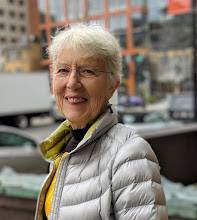Fourteen years ago, back in October of 2011, I posted a poem of mine entitled, "Like Poetry, Mathematics is Beautiful" (at this link). Written more than thirty years ago, this continues to be one of my favorites of my mathy poems. I offer a portion of it below.
Like Poetry, Mathematics is Beautiful by JoAnne Growney
Timidly I ask
each one I meet if they
find mathematics beautiful
or useful, and each one dares to say,
"Useful, of course. I use it every day."
And if I seem to want a proof,
they all go on to tell
that daily they subtract and add
to keep a checkbook; sometimes also
they multiply to find how many squares
they need to tile the kitchen floor.








